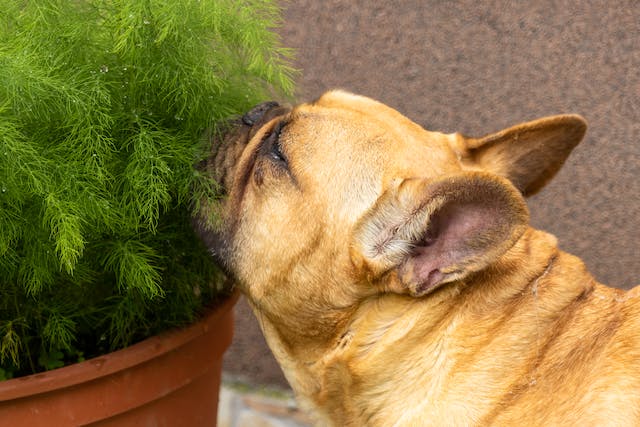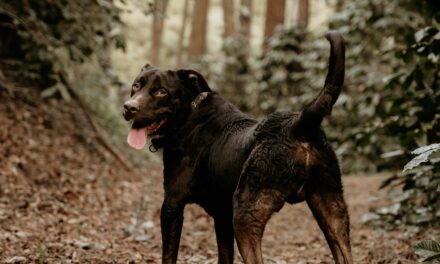Have you ever wondered how dogs seem to effortlessly navigate their world, sniffing out hidden treasures and tracking scents, we can only begin to imagine? It’s no secret that our four-legged friends possess an extraordinary sense of smell. A dog’s olfactory system is so finely tuned that it rivals even the most advanced human technology. But what exactly makes a dog’s nose so unique?? How do they use this remarkable sense to perceive and interact with their environment in ways we can only dream of?
This captivating article will delve into the science behind a dog’s sense of smell and unlock the secrets of their extraordinary noses. We’ll explore how dogs’ nasal passages are designed to capture molecular information from the air, allowing them to detect scents far beyond our limited capabilities. From identifying familiar faces merely by smell to seeing diseases in humans, these furry detectives have impressive skills worth marveling at.
So join us on this olfactory odyssey as we uncover why a dog’s nose isn’t just for sniffs and wagging tails—it is genuinely a superpower. Prepare to be amazed as we journey deep into the fascinating world of canine olfaction and discover why dogs, indeed, are masters of scent!
The Anatomy and Physiology Behind a Dog’s Nose
A dog has a remarkable scent, distinct features, and intricate structure designed for exceptional capabilities. The external parts of a dog’s nose may seem quite similar to ours – a pair of nostrils at the end of their snout. However, upon closer examination, we begin to appreciate the marvels within.
Inside a dog’s nose lies an organ dedicated solely to detecting scents – the olfactory epithelium. This specialized tissue lines receptor contains millions upon millions of receptor cells, each primed to detect different odors. Unlike humans with around 5 million scent receptors, dogs boast up to 300 million or more! Furthermore, this incredible olfactory prowess doesn’t stop there. Dogs possess an additional organ called the vomeronasal organ (VNO), also known as Jacobson’s organ, which further enhances their smelling abilities by detecting pheromones.
So why do dogs need such an extensive olfactory system? Unlike humans relying primarily on vision or hearing for navigation and communication, a dog’s world revolves around smells. They gather information about everything through their sense of smell – from identifying individuals based on scent markers left behind in urine or sweat glands to locating hidden food sources miles away. A walk down the street for us might be filled with sights and sounds; for dogs, it’s an aromatic tapestry telling stories untold.
Intricate nuances aside – as complex as our canine companions’ noses may be – they are undeniably one of wonder when exploring scents around them. Understanding this incredible canine adaptation sheds light on how these furry friends perceive and smell far beyond our limited senses.
Olfactory Receptors: Secret Weapon
Ever wonder why dogs’ scent is entirely invisible to humans? The answer lies in their remarkable arsenal of olfactory receptors. While humans have about 5 million olfactory receptors, dogs boast an impressive number ranging from 125 million to 300 million, depending on the breed.
These specialized sensory cells line the dog’s nasal cavity and play a crucial role in detecting and processing smells. Olfactory receptor proteins within these cells bind with odor molecules, triggering a cascade of electrical signals that transmit information directly to the brain for interpretation. What sets canine olfactory receptors apart is not just their sheer abundance but also their specificity. Each receptor is designed to detect specific types of molecules, enabling dogs to distinguish between different scents with astonishing precision.
While we may perceive a vague smell or scent as one cohesive entity, our four-legged friends can discern individual components within that aroma. Imagine smelling freshly baked cookies. With scent, dogs can pick out each ingredient – butter, sugar, vanilla – all at once! This heightened sensitivity of doggy noses allows them to detect faint odors and analyze complex mixtures thoroughly. These incredible receptors shed light on why dogs are used in search and rescue operations and sniff out contraband at airports – they possess superpowers for sensing smells!
The Science Behind Recognizing Scents
Dogs have an extraordinary ability to smell molecules in their olfactory system. When a dog smells something, it internally detects specific molecules that make up that scent. These molecules, known as volatile compounds, are released into the air and enter a dog’s nasal cavity through inhalation.
Once inside the nose, these volatile compounds bind to special receptor cells in the olfactory epithelium – a part of the nasal tissue responsible for smell detection. Each receptor cell is tuned to detect specific types of molecules or odorants. This allows dogs to differentiate between different scents with astonishing accuracy.
But how do dogs remember and identify specific scents? It turns out that dogs can create scent imprints in their brains when possible odors, particularly in scent imprints, allowing them to recognize and recall associated items over periods of time. This ability is beneficial for search-and-rescue dogs who need to identify particular individuals by sniffing articles related to them.
So next time you see your furry friend intently sniffing something on their walk, know that they are using their remarkable sense of smell – detecting individual molecules in the air and creating unique scent imprints – all contributing to their unparalleled ability to recognize and distinguish various scents in their environment.
Canine Scent Discrimination Abilities
Dogs have an extraordinary sense of smell, capable of discriminating between various scents. Their noses are finely tuned instruments that can detect odors in parts per trillion, making them invaluable assets in multiple fields. One remarkable example is the use of dogs in search and rescue missions to find missing persons. These highly trained canines have successfully located individuals buried under rubble or lost in remote areas, relying solely on their scent discrimination abilities.
But it’s not just search and rescue where dogs excel at scent detection. Law enforcement agencies also employ them to uncover hidden contraband, such as explosives or drugs. The olfactory system of dogs is so advanced that they can differentiate between minute differences in odor profiles, enabling them to pinpoint specific substances even amidst multiple other scents.
These capabilities are astounding because training further enhances a dog’s innate aptitude for scent discrimination. With proper instruction and reinforcement, dogs can become increasingly accurate at identifying particular smells within complex environments. This highlights the importance of investing time and effort into training programs that harness and develop a dog’s exceptional olfactory prowess.
Comparing Dog’s Sense of Smell to Humans
When it comes to the sense of smell, dogs have us beat by a long shot. While humans have about 5 million scent receptors in their noses, our four-legged friends boast an impressive 220 million. This explains why they can detect scents that are utterly invisible to us. For example, dogs can pick up on specific odors from miles away, leading them straight to a lost person or sniffing out hidden contraband.
Not only do dogs have more scent receptors, but they also have a much lower scent threshold compared to humans. In other words, their brain requires far less odor concentration to perceive a smell. This is why they excel in tracking down even the faintest traces of substances like drugs or explosives. It’s remarkable how sensitive their noses are and how finely tuned their olfactory system has evolved.
In addition to having superior sensitivity and perception of smells, dogs also possess an incredible range of odor-detection capabilities. While humans may struggle with differentiating between similar odors or picking up subtle nuances in aromas, dogs have no limitations. They can effortlessly parse through complex mixtures of scents and distinguish between individuals based on slight variations in body odors alone. Their ability goes beyond simple identification – dogs can even detect changes in emotional states by smelling human chemical signals! The disparity between dog and human sense of smell reminds us that while we may rely heavily on our other senses, the canine nose truly reigns supreme when navigating the world through scent perception.
Applications for Canine Olfaction
Dogs have a remarkable sense of smell that is put to use in various practical applications. One such application is in search and rescue operations. Dogs are often deployed during disasters or emergencies to locate missing individuals by following their scent trail. With their incredible olfactory abilities, dogs can track scents that may be undetectable to humans, even if the smell has been diluted or contaminated.
Another valuable application for canine olfaction is in medical detection. Dogs have been trained to detect certain diseases and conditions by sniffing patients’ biological samples, such as urine or breath samples. They can identify specific scents associated with these diseases, including cancer, diabetes, and infections. This ability can lead to early detection and potentially life-saving interventions.
Additionally, dogs are employed in conservation biology through their olfactory skills. They can be trained to detect species-specific scents or samples left behind by endangered animals. Researchers and conservationists can gather essential data on population size and distribution patterns without disturbing the animals by locating these scents.
These examples only scratch the surface of how canine olfaction is being utilized practically across different domains. The potential applications seem limitless when considering future advancements in training methods and harnessing dogs’ innate abilities for more complex tasks involving scent detection and identification.
Conclusion:
In conclusion, the remarkable ability of dogs to navigate and experience the world through scent is genuinely awe-inspiring. We have explored how their olfactory system works, from the intricate structure of their nasal cavities to the millions of receptors that allow them to detect and distinguish a wide range of odors. Their sense of smell is incredibly sensitive and provides valuable information about their environment, other animals, and even human emotions.
We have learned that dogs use their noses for various purposes, such as tracking scents for hunting or search-and-rescue missions, detecting diseases or drugs in medical settings, and even identifying specific individuals through scent profiles. Their olfactory capabilities go beyond what humans can comprehend or replicate.
Understanding how dogs perceive and interact with their world through scent reminds us of the richness of the animal kingdom’s sensory experiences. It also highlights the critical role that our canine companions play in our lives as they use this incredible sense to connect with us emotionally. As we unravel the mysteries behind a dog’s nose, let us appreciate these extraordinary creatures and honor their unique abilities while cherishing our special bond with man’s best friend.



